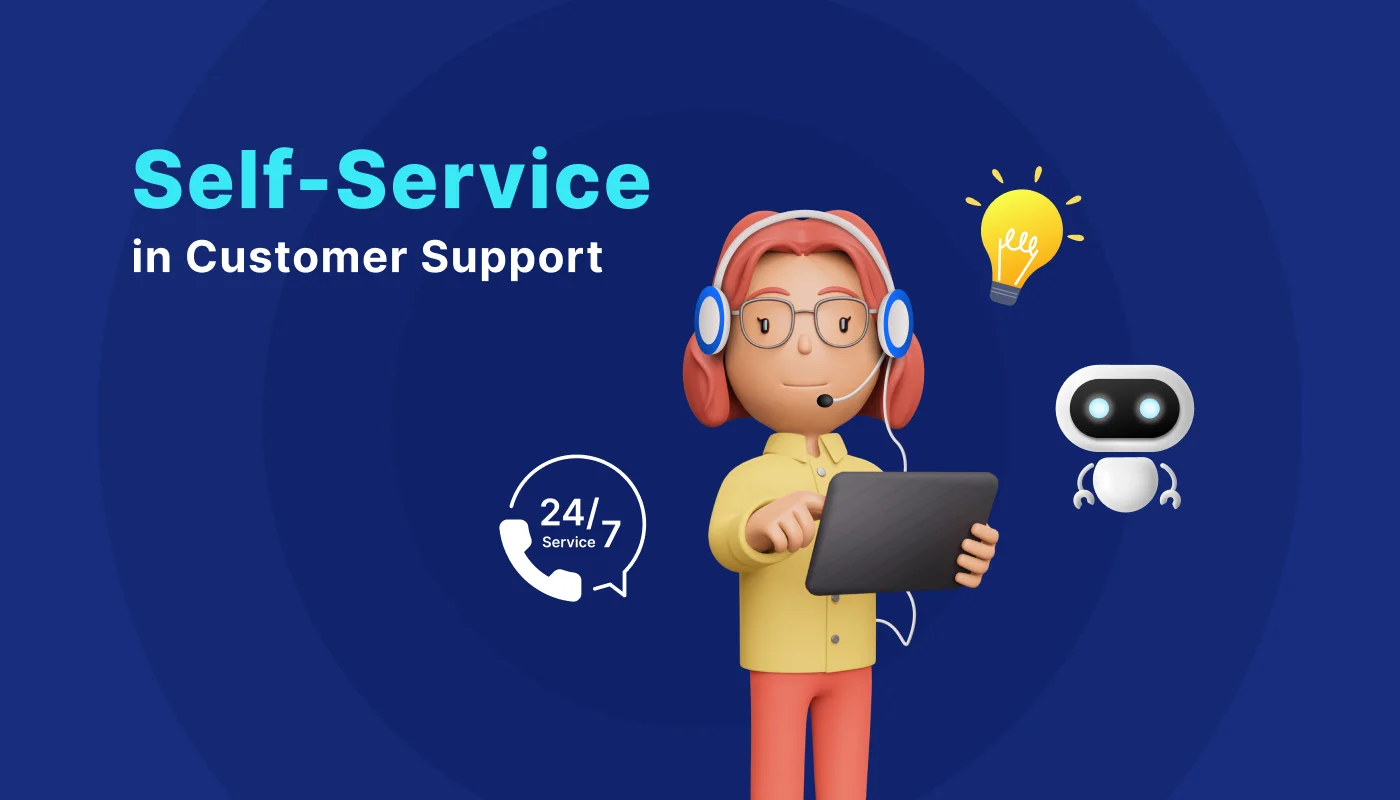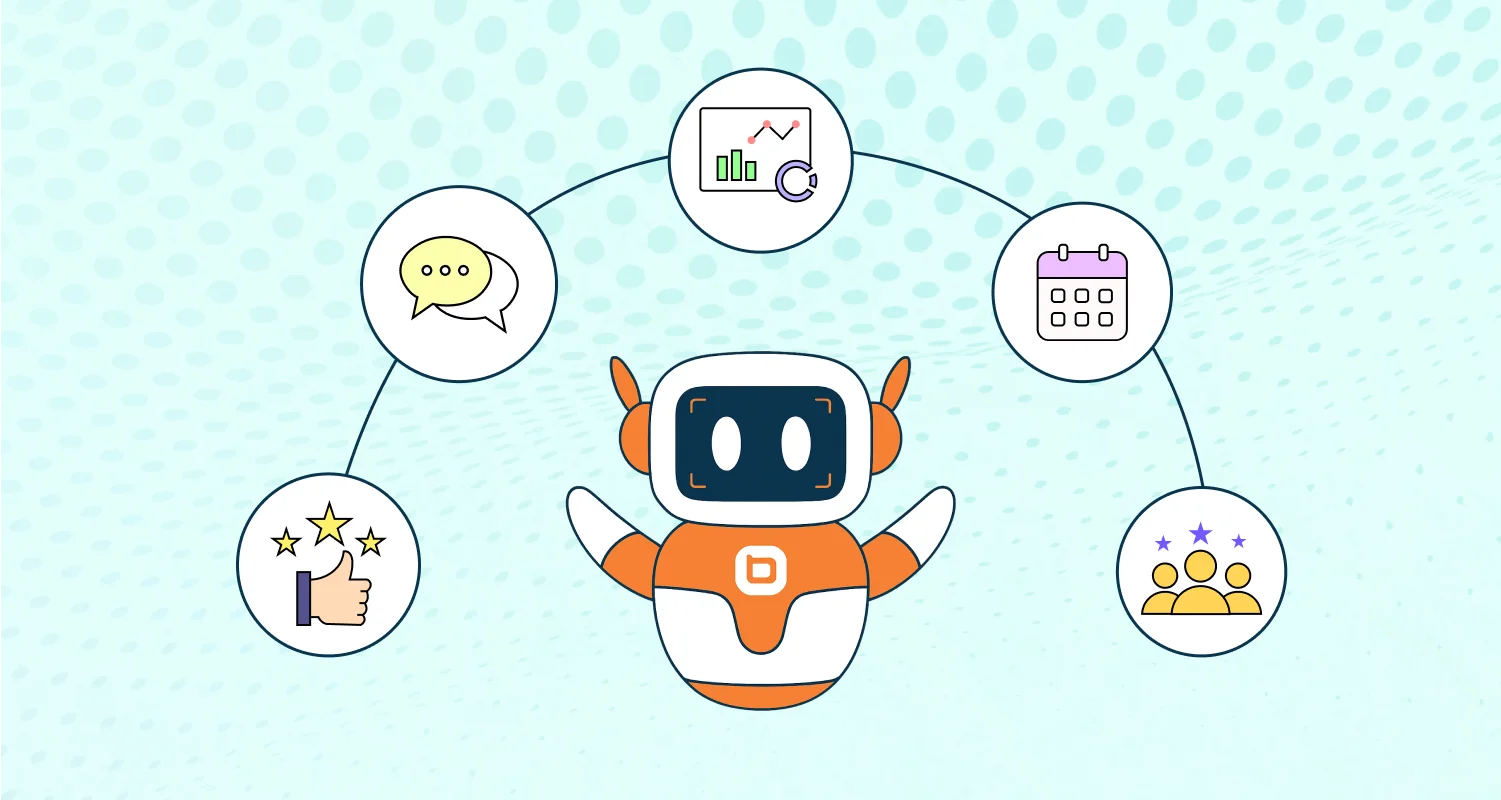Customer self-service alters how companies engage with their clients. Even though self-service is not a new concept, customer trends can call for more self-service options in new areas.
According to Harvard findings, 81% of clients prefer to take care of issues themselves before reaching out to live representatives.
This blog post will examine seven benefits of customer self-service in customer support and ways to improve self-service in your business.
What is customer self-service?
Customer self-service enables customers to find solutions to their problems, access information, and perform various tasks without directly interacting with a company representative.
Customer self-service is available through a variety of channels, including knowledge bases, FAQs, chatbots, how-to videos, and online portals.
Benefits of customer self-service in your organization
Here are the top seven significance of a customer self-service solution in your business.
Increases efficiency and productivity of the support team
Self-service customer service is available around the clock, allowing customers to find solutions to their issues anytime without needing any intervention from the support team.
As a result, the brand’s total effectiveness can be improved.
Additionally, the support team can be more productive and efficient with fewer support tickets and queries to manage.
They can spend more time on initiative-taking tasks, such as improving the knowledge base to continuously boost their support level.
Provides 24/7 support
If you want to succeed in the market, you must live up to the grand expectations of the modern consumer.
Businesses can only offer human support to customers during specific hours and certain days of the week.
However, self-service is available around the clock and on holidays. Consumers no longer must wait for answers as a result.
Serves more customers at once
Support representatives can serve a countable number of clients. Customers have a speedier option that often satisfies everyone when using self-service options such as a knowledge base.
For example, businesses like restaurants may find that installing self-service booths results in more customers.
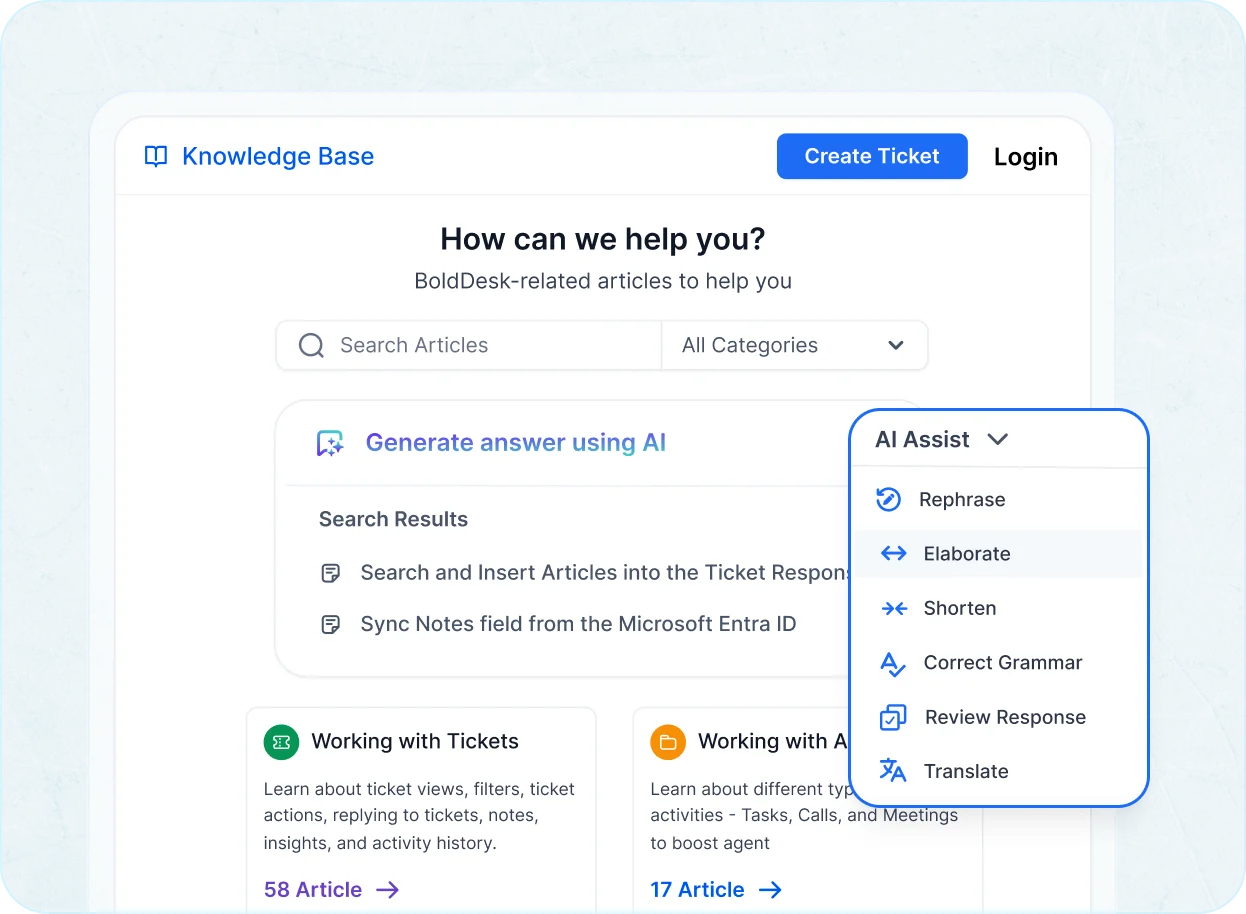
Self-service offers significant benefits to both the customer and the business. Some significance include:
- Customers can consult the latest information on websites and knowledge bases to obtain the same answer they would receive from support staff.
- Provide businesses with the opportunity to gather valuable information from clients for future marketing strategies.
It is cost-effective
Encouraging customer self-service is much less expensive than hiring a support team to manage client inquiries.
A significant percentage of a company’s money utilized in other areas can be saved.
With self-service, businesses need to spend less time and money on employee training since performing specific tasks is shifted to the customer.
This can lead to significant savings in training expenses.
Enhances the customer experience
Companies are aware that offering top-notch customer service is essential to their success.
Contacting the support team may cause consumers inconvenience in addition to a delay in assistance.
The research may find that customers prefer to oversee their difficulties instead of asking for help.
Using this information, customer self-service can become a trustworthy substitute for the support team in the company.
Customers will be more satisfied and have a better experience if they can solve their problems without assistance from support personnel.
Reduces the burden on support staff
Support staff strain must be reduced for businesses to maintain high productivity and customer happiness.
Implementing self-service alternatives in customer assistance is one method to do this. Customer assistance is crucially dependent on self-service for a few reasons:
- Reduced need for additional staff: With self-service options managing a huge portion of customer inquiries, organizations may not need additional support staff to manage the workload.
- Scalability: As an enterprise grows, so does the demand for customer support. Self-service options allow organizations to scale their support efforts without needing a proportional increase in support staff.
Provides insight into customers’ needs
Customer self-service provides insights into customers’ needs by enabling businesses to collect and analyze customer behavior, preferences, and feedback data.
This information can then improve products, services, and customer experiences.
Companies use a self-service solution to collect customer feedback and receive suggestions or related information.
These insights may be leveraged to develop consumer-focused offerings, enhance the self-service experience, and guarantee outstanding customer service to clients.
Tips for improving your customer self-service strategy
A well-designed self-service strategy empowers customers to find answers and solve problems independently, improving their experience and reducing strain on support teams.
Improve content discoverability
To provide the best customer self-service experience, you need a search engine optimization (SEO) strategy. This may include:
- Incorporating relevant keywords, meta descriptions, and tags to ensure content ranks high on search engine results pages (SERPs).
- You can also organize content into intuitive categories.
- Provide a user-friendly navigation system, including a dynamic internal search engine with autocomplete, filtering, and suggestion features.
Furthermore, incorporating frequently asked questions (FAQs), clear headings, and a logical hierarchy helps customers find information more easily.
Conduct regular updates
Out-of-date and irrelevant content frustrates users and undermines customer trust. Regularly update and maintain your self-service resources, like FAQs and knowledge bases. Ensure information is accurate and addresses the issues customers are most likely to face.
Integrate emerging technologies
Integrate new technologies like chatbots or virtual assistants to answer basic questions and offer 24/7 support. Consider optimizing your websites for mobile devices and offering self-service options within your mobile app for on-the-go convenience.
Include self-service options across multiple channels
Don’t limit self-service to your website. Integrate self-help resources and links in your mobile app and social media platforms to allow customers to access information, perform transactions, and solve issues using the most convenient omnichannel support option for them.
Provide quick escalation options
Make it easy for customers to escalate to a human agent if their issue is complex or requires further assistance.
Offer a clear and prominent “Contact Us” button, chat option, or phone details within the self-service platform to ensure customers get the personalized help they need.
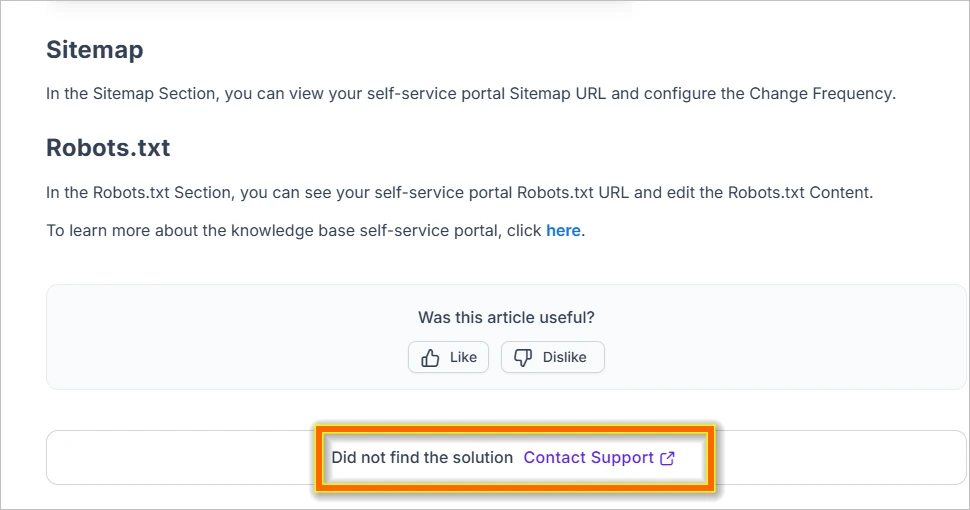
Enhance the readability of the self-help resources
Always use clear, concise language and break down complex topics into easy-to-understand steps whenever you add content into your knowledge base.
Incorporate visuals like screenshots or infographics to further improve comprehension.
Ensure your self-service resources are also accessible to everyone. This includes using proper coding for screen readers, offering alternative text descriptions for images, and providing content in multiple languages.
Leverage customer feedback
Customer feedback can help you refine your customer self-service strategy. By utilizing surveys, comment sections, and direct feedback channels, companies can identify common customer pain points, confusing interfaces, or frequently asked questions.
These insights can then be used to refine knowledge bases, streamline navigation, improve interactive elements like bots, and create more intuitive self-service workflows.
Additionally, analyzing feedback trends can help businesses anticipate customer needs, leading to the proactive development of tutorials, FAQs, and instructional content that empower users to independently solve problems better.
Companies looking to begin offering self-service to their clients have many choices.
Customer self-service examples
Customer self-service is an essential component of modern businesses, empowering customers to find answers and resolve issues independently.
Here are the major examples of effective customer self-service options:
Knowledge base
One of the most common and effective customer self-service options is a knowledge base software. It is a central storage space for information about a particular subject.
This self-help tool is commonly used to complement customer self-service as it allows users to find answers to their questions without contacting customer support directly.
According to research by Higher Logic, 92% of people indicated that they would opt for a self-service option through a knowledge base if one were available.
By providing a comprehensive knowledge base, companies can significantly reduce the volume of customer support tickets and empower customers to solve their own problems quickly and efficiently.
FAQ page
Many business websites have a frequently asked questions (FAQ) section where they provide answers to common questions that customers have.
An FAQ is often organized by topics and provides concise, straightforward answers, making it easy for customers to navigate and locate relevant information.
Question topics can range from product usage to payment methods, to product information, to troubleshooting steps.
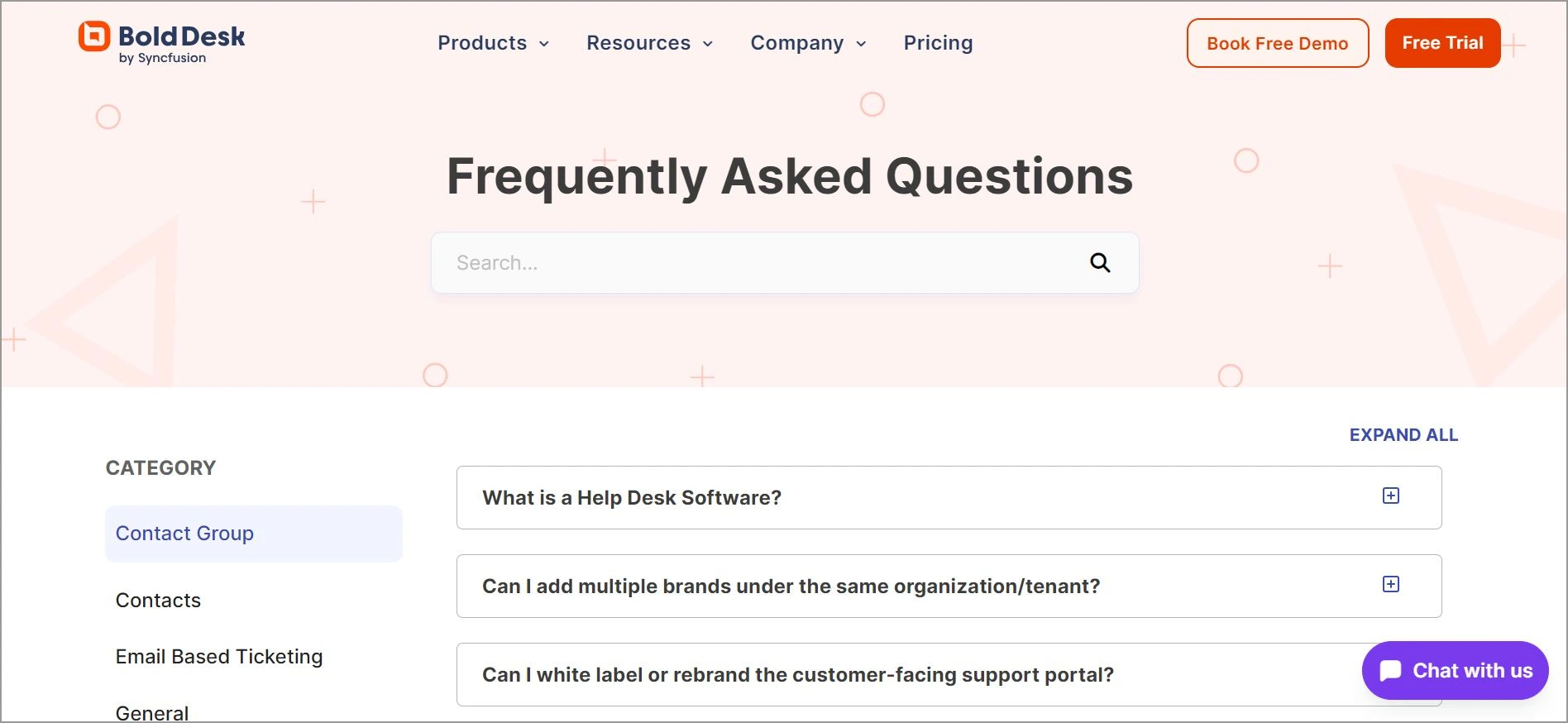
Artificial Intelligence
Artificial intelligence(AI) can significantly enhance customer self-service by making it more informative, efficient, and user-friendly.
An AI-powered knowledge base, for example, can examine a customer request and provide relevant articles, tutorials, or FAQs.
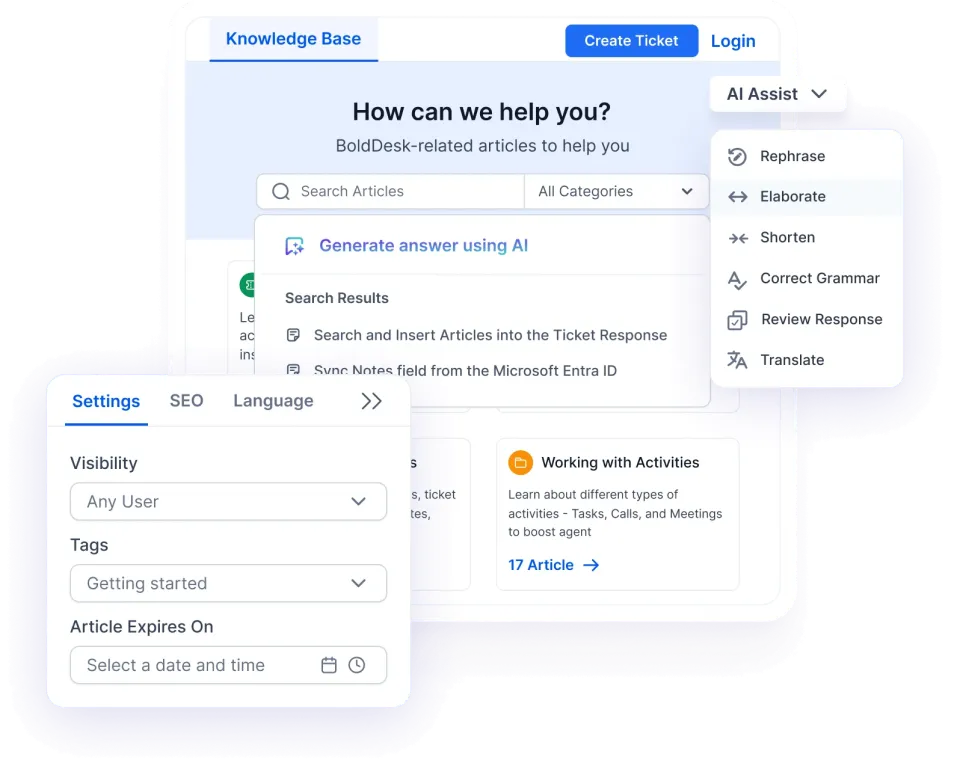
AI further enhance customer self-service by analyzing customer data for intent and sentiment to comprehend customer requests better and provide accurate and personalized responses.
With 24/7 availability and the ability to deliver accurate information, AI-powered chat solutions are a valuable asset to self-service systems.
AI complements customer support teams by handling routine inquiries so that agents can focus on complex issues that require human intervention.
Community forums
Community forums are online platforms where individuals with shared interests or concerns can gather to discuss topics, ask questions, share information, provide support, and connect with each other.
In a business setting, forums are often moderated by the company but rely on peer-to-peer support among customers.
They are organized around aspects of a business’s offering, such as product features and technical support.
Mobile apps
Mobile apps have become a popular and convenient platform for providing self-service options to users.
They offer self-service features that allow users to access information and resolve issues without contacting support, like troubleshoot guides and knowledge bases.
And when a user is unable to solve a problem on their own, they can use the app to file a support ticket or initiate live chat support.
Video tutorials
Visual learners benefit from video tutorials that show them how to use a product or service.
Companies can create instructional videos on how to set up or use their products, which can be more engaging than text-based guides.
By taking advantage of these resources, users can enhance their skills, save time, and reduce the need for direct support.
Leverage customer self-service portals for empowerment
Customer self-service offers a fantastic way for customers to identify solutions and address their issues independently, without the assistance of support staff.
Online community forums, knowledge bases, and FAQs are all examples of customer self-service.
Customer self-service can significantly enhance the productivity of an organization by empowering users and reducing support workload.
Schedule a live demo to experience how BoldDesk can encourage customer self-service. BoldDesk provides an incredible knowledge base software to empower your customers and agents.
To experience the value you can deliver to your support team and customers, sign up for a BoldDesk free trial. If you have any queries, contact the BoldDesk support team.
Related articles
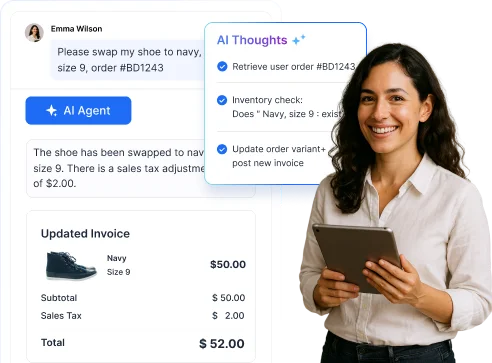


















 Email Ticketing System
Email Ticketing System Shared Inbox Software
Shared Inbox Software Multi Brand Help Desk
Multi Brand Help Desk Internal Help Desk Software
Internal Help Desk Software Trouble Ticketing Software
Trouble Ticketing Software Mobile Help Desk
Mobile Help Desk 









